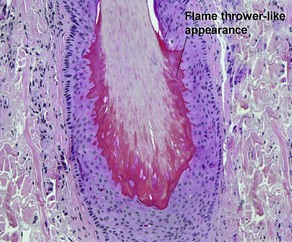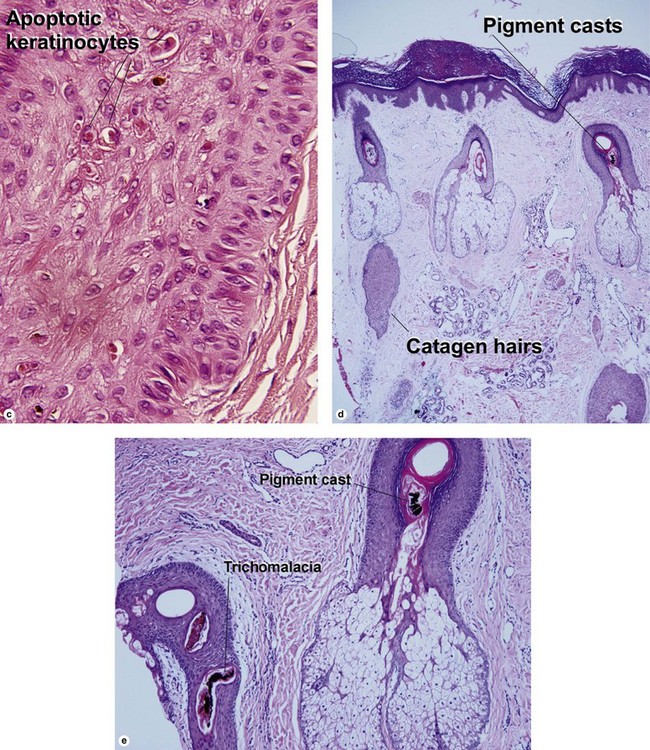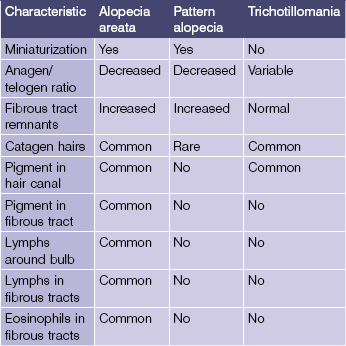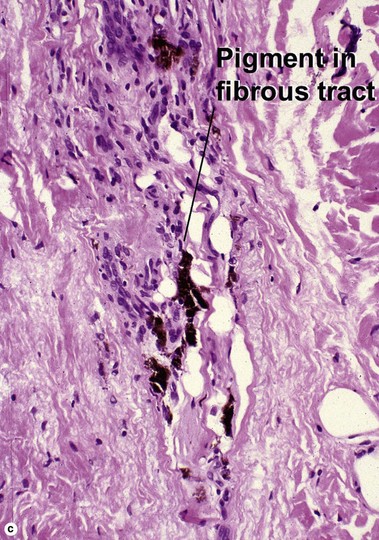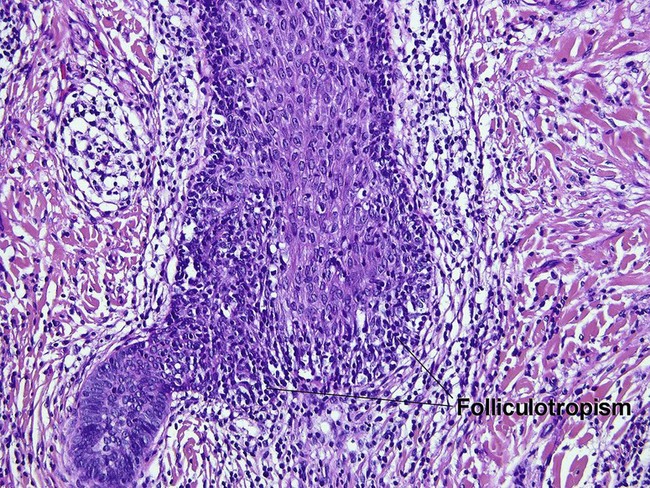Disorders of skin appendages
Non-inflammatory alopecia


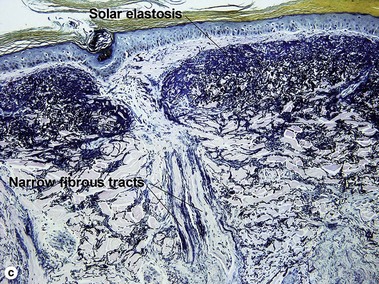
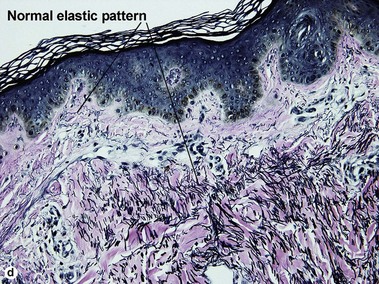
Fig 15-1 (a,b) Pattern alopecia. (c) Solar elastosis and narrow fibrous tract remnants in pattern alopecia (Verhoeff–van Gieson stain). (d) Normal elastic tissue pattern for comparison (Verhoeff–van Gieson stain)

